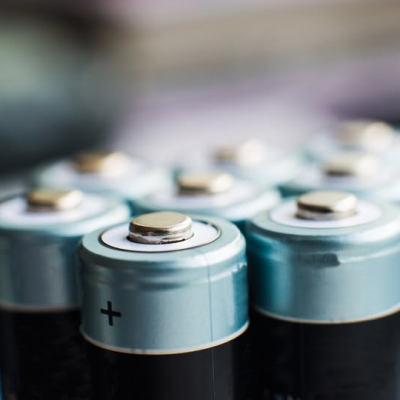“We have successfully developed a process for building graphene energy harvesting device structures,” Thibado said, “but current structures do not harvest enough power. This proposal will allow us to optimize these structures to harvest nanowatts of power, which is enough energy to run sensors.”
Thibado and his colleagues will develop graphene energy harvesting (or GEH) technology for the following sources of power: solar, thermal, acoustic, kinetic, nonlinear and ambient radiation. As each device is developed, his team will then build a full prototype sensor system around that specific power source.
Nancy Chan, executive director of the WoodNext Foundation, said, “We’re excited to support Paul’s work. We think it’s an important step in the development of more clean energy options, as well as a potentially exciting advance in building the internet of things.”
Thibado noted that current state-of-the-art sensor technology is powered by batteries that require microwatts (a millionth of a watt) of continuous power. The goal of his project is twofold:
1– Reduce sensor power demand to nanowatts (a billionth of a watt) and
2– Power these sensors using energy harvested from the local environment.
Notably, these systems will not include batteries, which have a limited lifespan, allowing them to achieve exceptionally long operational lifetimes — potentially several decades.
“Mass use of this technology will further expand the internet of things,” Thibado explained, “which transforms ordinary sensors into smart nodes within an intelligent network. Thus, our systems will impact a wide range of applications.”
How wide? Thibado envisions these sensors being used in transportation product tracking, logistic fleet management, livestock tracking, soil sensors, agricultural climate monitoring, environmental flood alerts, disaster planning, atmospheric monitoring, predictive maintenance, manufacturing process monitoring, utility smart meters/grids, city smart parking, traffic control, city lighting, waste management, bike/scooter management, camera systems, building alarm systems, temperature control, lighting, access, wearable fitness monitoring, child tracking and medical tracking. So, pretty wide.
The installation cost of GEHs is expected to be competitive with other forms of energy supply, both large and small scale. However, GEH’s operational cost will be near zero with no costs for fuel, charging, replacement or overhaul. For example, a GEH chip could be placed in a remote temperature sensor. This chip, a component of its electronic module, will free the device from the need for external power or batteries. The chip will not require replacement, as it has the same life as other components of the device. With GEH technology, the device can be more compact, portable and safeguarded from power failure.
Additional Collaborators
A subaward of $210,000 will go to David Blaauw, a professor of electrical engineering and computer science at the University of Michigan. An expert in low-power wireless sensors and embedded systems, Blaauw will oversee fabrication of “Michigan Micro-Mote” sensors custom designed for seamless integration with each type of U of A graphene power harvester.
Blaauw will fine tune the power consumption and duty cycle of the various sensors to align with the power supplied by the U of A harvester. He will also implement a capacitive energy averaging method to support brief periods of higher power consumption.
NTS Innovations, a company specializing in nanotechnology, owns the exclusive license to develop GEH into commercial products. The company has provided funding for patenting, creating business plans, finding business partners and customer discovery.
NTS Innovations’ role over the course of the grant is to engage with customers on acceptance criteria, such as the minimum power levels needed for inclusion in products. Currently, more than 60 parties have expressed interest in testing the technology and working with Thibado and his colleagues to integrate it into their applications.
Thibado thinks his team, in cooperation with NTS Innovations, will be able to send a first-generation self-powered GEH sensor to interested customers for feedback as early as the second year of the award.
Graphene and GEHs
Discovered in 2004, graphene is a one-atom-thick sheet of graphite. Freestanding graphene has a rippled structure, with each ripple flipping up and down in response to the ambient temperature.
“The thinner something is, the more flexible it is,” Thibado said. “And at only one atom thick, there is nothing more flexible. It’s like a trampoline, constantly moving up and down. If you want to stop it from moving, you have to cool it down to 20 Kelvin.”
GEHs use a negatively charged sheet of graphene suspended between two metal electrodes. When the graphene flips up, it induces a positive charge in the top electrode. When it flips down, it positively charges the bottom electrode, creating an alternating current. With diodes wired in opposition, allowing the current to flow both ways, separate paths are provided through the circuit, producing a pulsing DC current that performs work on a load resistor.
This video provides a little more background.
Support from the U of A
Thibado is quick to acknowledge the significance of the U of A’s support for his work. Over the years, he has received $350,000 from the Chancellor’s Innovation and Collaboration Fund in $50,000 increments. After the university issued a press release on a paper he published in 2016, NTS Innovations contacted him about licensing his discovery. A more recent paper published in 2023, also publicized by the U of A Office of University Relations, helped bring his work to the attention of the WoodNext Foundation.
Read the original article on University of Arkansas.







